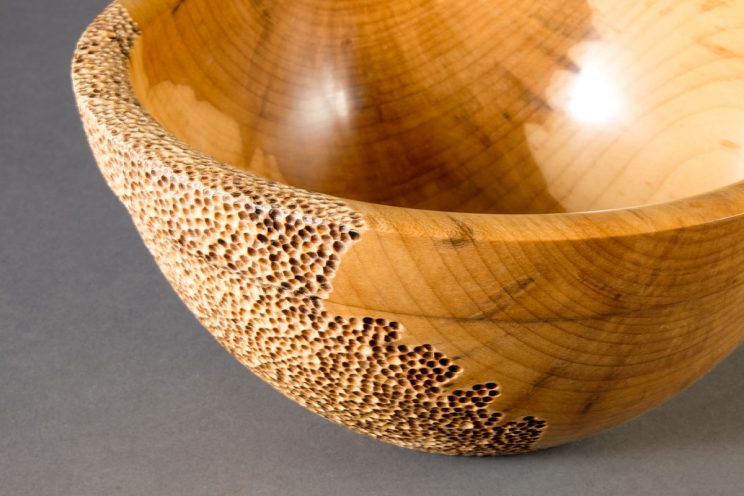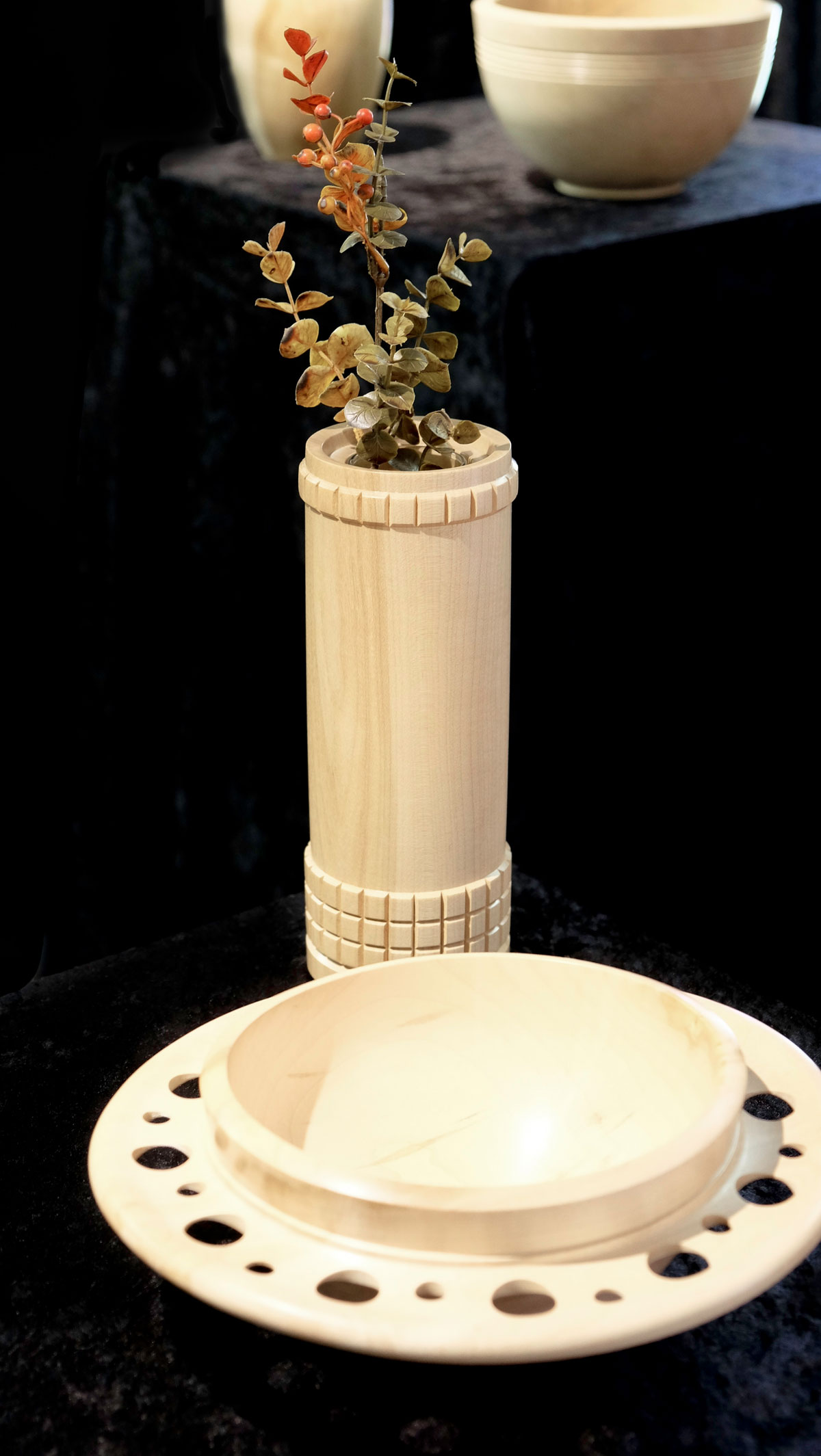About Bowls
After carefully selecting a suitable log, I begin by…
cutting it into sections that become bowl blanks. Excess wood from each blank is trimmed away with a chainsaw or bandsaw before the blank is mounted on the lathe. Once mounted, wood is removed from the spinning blank with a bowl gouge in order to create a rough bowl.
As this work is being done, the wood is constantly being evaluated to take advantage of any unusual grain patterns and to eliminate any flaws that would detract from the finished bowl.
When the bowl has been turned to the rough size and shape, it is weighed and packed away to dry. A rule of thumb is that green wood must dry for one year per every inch of thickness, so larger bowls often take one to two years to dry fully.
Once dry, the rough bowl is remounted on the lathe and the final shaping, sanding and finishing takes place. Surface embellishments such as carving, texturing or pyrography are added at this time as well.
The last step is to brand and number the bowl before it leaves the shop.
Finally, the bowl is photographed and cataloged before offering it for sale.

